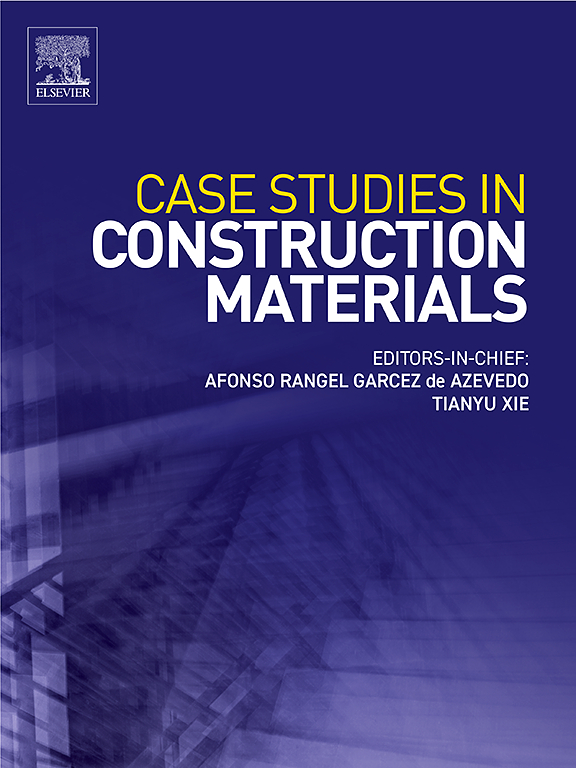研究了高吸水性聚合物在溶液和浆料中的吸水释放性能及机理
IF 6.6
2区 工程技术
Q1 CONSTRUCTION & BUILDING TECHNOLOGY
引用次数: 0
摘要
高吸水性聚合物(sap)是一种能够吸收和保留大量水分的有机聚合物,其吸收和释放性能的变化会影响水泥基材料的混合设计、微观结构、机械性能和耐久性。本研究考察了SAP类型(聚丙烯酸钠,AA和聚丙烯酸-丙烯酰胺共聚物,AM)和粒径对吸水能力的影响,以及环境温度和湿度对饱和SAP释放行为的影响。采用点计数法评价硬化膏体中sap的实际吸附性能,采用扫描电镜观察水释放后形成的孔隙结构。结果表明:随着SAP粒径的增大,其吸水能力增强,放水能力降低;AA在去离子水中的吸水性优于AM,而在水泥滤液和硬化膏体中的吸水性则相反。AA对温度更敏感,而AM对湿度更敏感。采用假设吸水率的方法,可以得到SAP在膏体中的实际吸水性能。随着水胶比的增大,SAP在膏体中的吸附性能先增大后减小。SEM观察表明,AA在膏体释水后收缩成球状,与周围基质边界清晰,而AM在释水后与膏体紧密结合。本文章由计算机程序翻译,如有差异,请以英文原文为准。
The water absorption and release performance and mechanism of superabsorbent polymers in the solution and paste
Superabsorbent polymers (SAPs) are organic polymers capable of absorbing and retaining large amounts of water, with variations in their absorption and release properties impacting the mix design, microstructure, mechanical properties, and durability of cement-based materials. This study investigated the effects of SAP type (sodium polyacrylate, AA and polyacrylic acid-acrylamide copolymer, AM) and particle size on water absorption capacity, as well as the effects of environmental temperature and humidity on the release behaviour of saturated SAPs. The point-counting method was used to assess the actual absorption performance of SAPs in hardened paste, and SEM was used to observe the pore structure formed after water release. The results show that as the particle size of SAP increases, its water absorption capacity enhances, whereas its water release capacity decreases. AA absorbs water better than AM in deionized water, but the reverse is true in cement filtrate and hardened paste. AA is more sensitive to temperature, while AM shows greater sensitivity to humidity. The actual absorption performance of SAP in the paste can be obtained by using the method of assuming water absorption ratio. As the water-binder ratio increases, the absorption performance of SAP in the paste increases first and then decreases. SEM observations show that AA shrinks into a ball after the paste releases water, with a clear boundary with the surrounding matrix, while AM is tightly bonded to the paste after releasing water.
求助全文
通过发布文献求助,成功后即可免费获取论文全文。
去求助
来源期刊

Case Studies in Construction Materials
Multiple-
CiteScore
7.60
自引率
19.40%
发文量
842
审稿时长
63 days
期刊介绍:
Case Studies in Construction Materials provides a forum for the rapid publication of short, structured Case Studies on construction materials. In addition, the journal also publishes related Short Communications, Full length research article and Comprehensive review papers (by invitation).
The journal will provide an essential compendium of case studies for practicing engineers, designers, researchers and other practitioners who are interested in all aspects construction materials. The journal will publish new and novel case studies, but will also provide a forum for the publication of high quality descriptions of classic construction material problems and solutions.
 求助内容:
求助内容: 应助结果提醒方式:
应助结果提醒方式:


